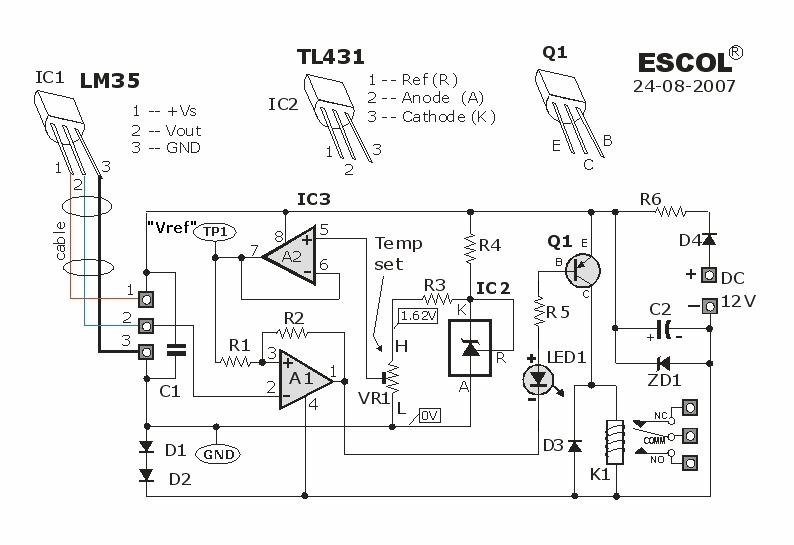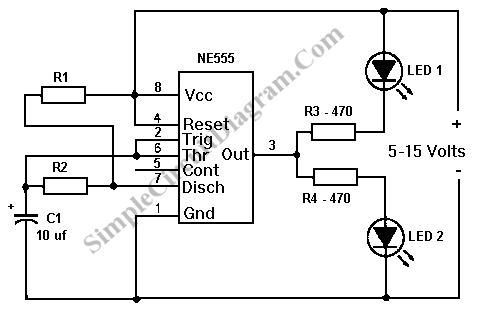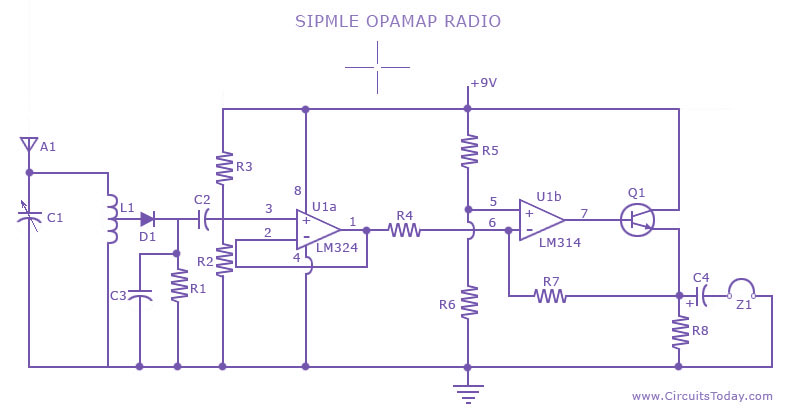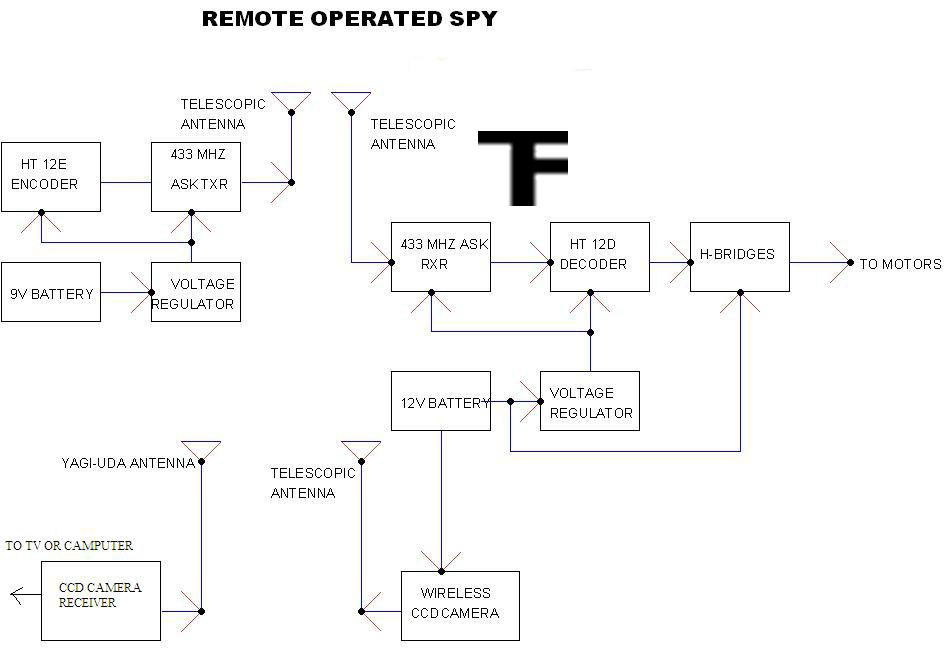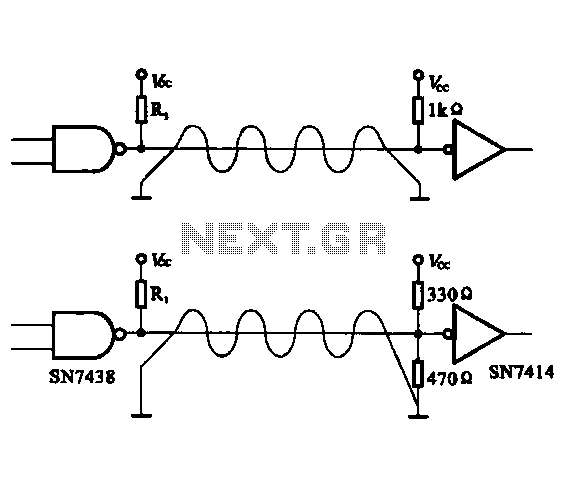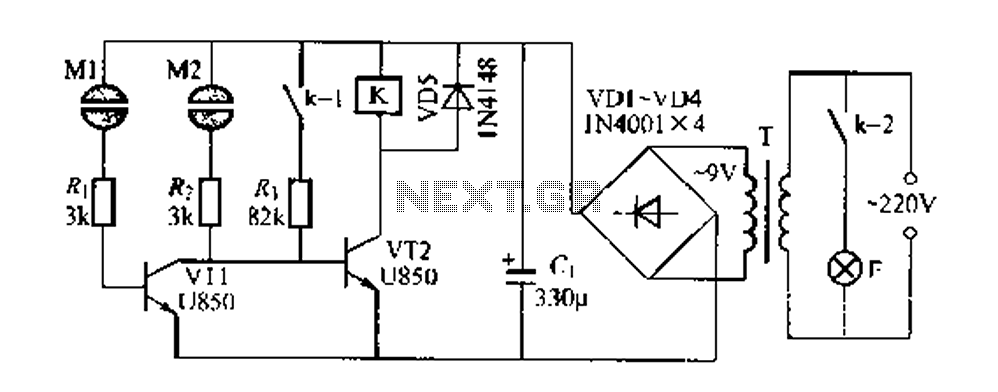
Self-Latching Light Alarm With Tone Output Circuit

A decrease in the resistance of the CDS cell when light strikes it activates latch A and B, enabling tone oscillator C and D, which produces an output of about 1000 Hz. RA sets the trip level. SI resets the circuit.
The described circuit utilizes a Cadmium Sulfide (CDS) cell, a light-dependent resistor that exhibits a decrease in resistance when exposed to light. This change in resistance is a critical parameter that triggers the activation of two latches, designated as latch A and latch B. These latches are part of a bistable multivibrator configuration, which allows the circuit to maintain its state until an external signal is received.
Upon activation by the CDS cell, latches A and B enable tone oscillators C and D. These oscillators are configured to generate a square wave output at a frequency of approximately 1000 Hz. The specific frequency can be adjusted by modifying the component values in the oscillator circuit, typically involving resistors and capacitors that set the timing characteristics of the oscillators.
Resistor RA plays a vital role in establishing the trip level for the circuit. This resistor determines the threshold at which the resistance change in the CDS cell is sufficient to trigger the latches. By selecting an appropriate value for RA, the sensitivity of the circuit to light can be fine-tuned, allowing for optimal performance in various lighting conditions.
Additionally, a reset mechanism is included in the design, represented by SI. This switch allows the user to reset the entire circuit to its initial state, effectively disabling the tone oscillators and returning the system to a standby mode. This feature is essential for applications where the circuit needs to be periodically reactivated or where manual control is required.
Overall, this circuit configuration is suitable for applications such as light-sensitive alarms, sound-producing devices, or any electronic system requiring a response to ambient light levels. The integration of the CDS cell with latches and oscillators exemplifies a simple yet effective approach to light detection and sound generation in electronic designs. A decrease in the resistance of the CDS cell when light strikes it activates latch a and b, enabling tone oscillator c and d wliich produces an output of about 1000 Hz. RA sets the trip level. SI resets the circuit. 🔗 External reference
The described circuit utilizes a Cadmium Sulfide (CDS) cell, a light-dependent resistor that exhibits a decrease in resistance when exposed to light. This change in resistance is a critical parameter that triggers the activation of two latches, designated as latch A and latch B. These latches are part of a bistable multivibrator configuration, which allows the circuit to maintain its state until an external signal is received.
Upon activation by the CDS cell, latches A and B enable tone oscillators C and D. These oscillators are configured to generate a square wave output at a frequency of approximately 1000 Hz. The specific frequency can be adjusted by modifying the component values in the oscillator circuit, typically involving resistors and capacitors that set the timing characteristics of the oscillators.
Resistor RA plays a vital role in establishing the trip level for the circuit. This resistor determines the threshold at which the resistance change in the CDS cell is sufficient to trigger the latches. By selecting an appropriate value for RA, the sensitivity of the circuit to light can be fine-tuned, allowing for optimal performance in various lighting conditions.
Additionally, a reset mechanism is included in the design, represented by SI. This switch allows the user to reset the entire circuit to its initial state, effectively disabling the tone oscillators and returning the system to a standby mode. This feature is essential for applications where the circuit needs to be periodically reactivated or where manual control is required.
Overall, this circuit configuration is suitable for applications such as light-sensitive alarms, sound-producing devices, or any electronic system requiring a response to ambient light levels. The integration of the CDS cell with latches and oscillators exemplifies a simple yet effective approach to light detection and sound generation in electronic designs. A decrease in the resistance of the CDS cell when light strikes it activates latch a and b, enabling tone oscillator c and d wliich produces an output of about 1000 Hz. RA sets the trip level. SI resets the circuit. 🔗 External reference
